The Most Updated Logo Design Trends in 2025

Source: George Bokhua, M, Dribbble, https://dribbble.com/shots/22685793-M
Logo design is constantly evolving, shaped by advancements in technology, cultural shifts, and the ever-changing needs of businesses. In 2025, brands are embracing fresh, innovative approaches to create visually striking and memorable identities. As digital platforms become more dominant, logos must be adaptable, dynamic, and optimized for multiple applications, from mobile interfaces to immersive experiences.
This year’s logo design trends focus on a balance between minimalism and complexity, with designers experimenting with bold typography, abstract symbolism, and interactive elements. Brands are prioritizing versatility, ensuring that their logos remain effective across various media while maintaining a strong and cohesive identity. Additionally, sustainability and authenticity are becoming key influences, with companies opting for eco-friendly designs and hand-drawn aesthetics to connect with their audience on a deeper level.
Emerging technologies, including artificial intelligence and motion graphics, are also redefining how logos are conceptualized and used. Motion-based designs, variable logos, and three-dimensional elements are gaining traction, offering brands a more engaging and futuristic appeal. Whether through nostalgic inspirations or cutting-edge digital enhancements, the logo design trends of 2025 reflect a dynamic fusion of creativity and strategic branding. Understanding these trends helps businesses stay ahead in an increasingly competitive visual landscape.
Minimalist Line Art Logos
Minimalist line art logos continue to dominate logo design trends, offering a clean, elegant, and highly versatile aesthetic. These logos rely on thin, precise lines to create visually appealing brand marks without unnecessary details. The simplicity of line art makes it ideal for various applications, from digital platforms to product packaging.
One of the key advantages of minimalist line art logos is their adaptability. They maintain clarity even when scaled down, ensuring a strong presence across different media. Whether used on websites, social media, or merchandise, these designs remain sharp and recognizable.
Brands favor this trend for its timeless appeal and modern sophistication. The reduction of complex elements allows for a strong focus on the brand’s essence. Industries such as fashion, wellness, and technology particularly embrace minimalist line art for its sleek and refined look.
The enduring axiom "less is more" finds its strongest echo in the 2024 logo design trends, where simplification and minimalism continue to reign supreme. This trend is not a mere reduction in visual elements, but a sophisticated and intentional approach to create logos that are timeless, versatile, and exceptionally memorable. In an era where consumers are bombarded with visual information, minimalistic logo design cuts through the noise, offering a clear and uncluttered representation of the brand.
Simplification in logo creation is about stripping away the superfluous until only the essential remains. Brands adopting this trend have transitioned towards logos that feature clean lines, reduced color palettes, and absence of complex gradients or embellishments. The result is a scalable and adaptive logo that performs effectively across various media, from the tiny screen of a smartwatch to the expansive canvas of a billboard.
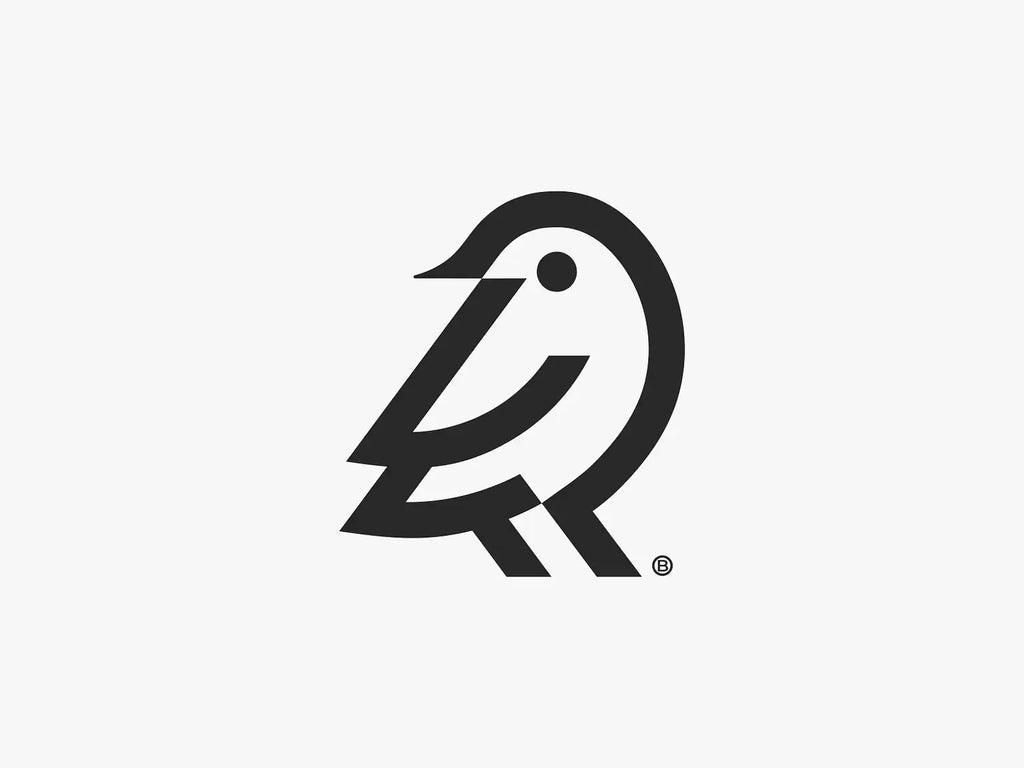
Source: Vadim Korotkov, Bird Mark, Dribbble, https://dribbble.com/shots/19842356-Bird-mark
Bold Typography Logos
Bold typography logos are making a powerful statement in logo design trends, emphasizing clarity, strength, and impact. These logos rely on heavy, oversized fonts to create a commanding visual presence. By using strong letterforms, brands can establish an unmistakable identity that stands out across various platforms.
Typography-driven logos work exceptionally well for businesses looking to communicate confidence and modernity. Industries such as tech, fashion, and media are leveraging this trend to create visually dominant brand marks that leave a lasting impression. The focus is on legibility, ensuring that even at a quick glance, the brand name remains memorable.
Many designers experiment with custom typography to add a unique touch. This includes modifying existing fonts or crafting entirely new letterforms tailored to a brand’s personality. Serif and sans-serif fonts both thrive in this trend, with many brands opting for geometric or block-style typefaces to reinforce their identity.
Another emerging approach within bold typography logos is layering and overlapping letters. This technique adds depth and visual intrigue while maintaining the logo’s bold character. Some designs integrate negative space within letterforms, subtly embedding symbols or messages to enhance brand storytelling.
Color choices play a significant role in this trend. While black-and-white typography remains timeless, vibrant and gradient-filled text logos are also gaining traction, adding energy and modernity to the composition.
As businesses seek striking and direct branding solutions, bold typography remains a cornerstone of logo design trends, ensuring high visibility and lasting recognition in an increasingly digital world.
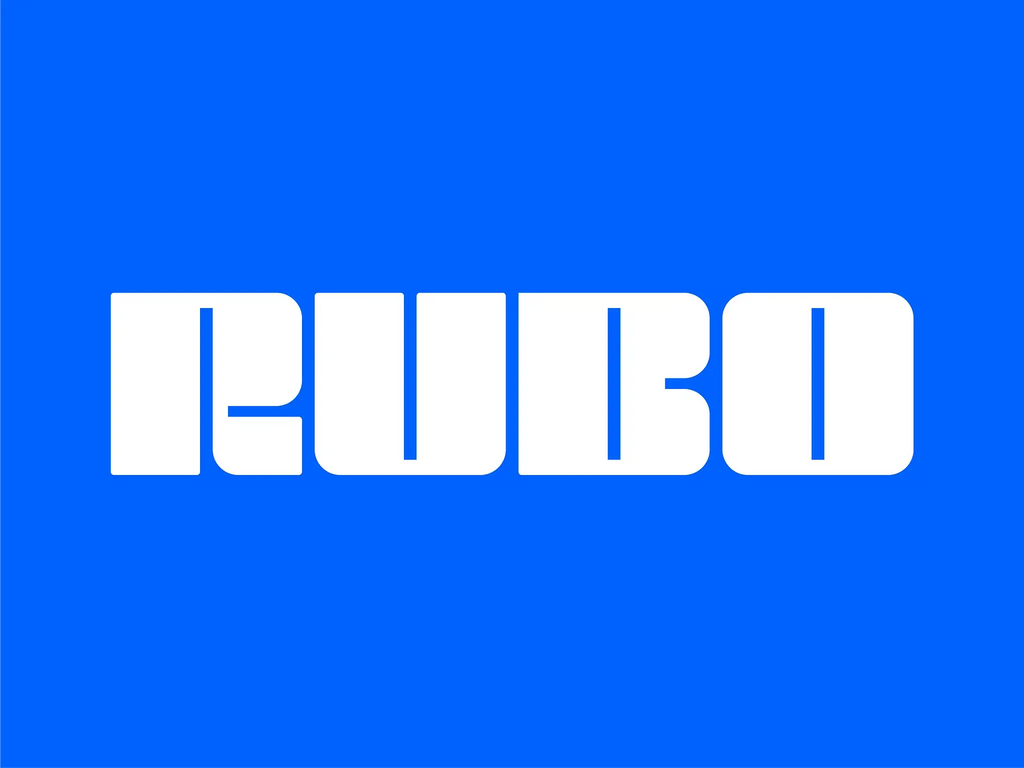
Source: Lucas Fields, RUBO Logotype, Dribbble, https://dribbble.com/shots/20876412-RUBO-Logotype
Gradient and Color Transitions
Gradients and color transitions continue to redefine logo design trends, adding depth, vibrancy, and a sense of movement to brand identities. This design approach blends multiple colors seamlessly, creating dynamic visual effects that enhance a logo’s modern appeal.
One of the key advantages of gradient logos is their ability to convey energy and innovation. By using soft or bold transitions, brands can evoke emotions and create a memorable impression. This trend is especially popular in technology, media, and creative industries, where vibrant color shifts symbolize progress and forward-thinking values.
Designers are exploring various gradient styles, from subtle duotones to complex multi-color blends. Linear gradients, which transition smoothly from one hue to another, are widely used for their clean and structured look. Meanwhile, radial and freeform gradients provide a more organic and fluid effect, making logos appear more dynamic.
Another emerging technique involves layered gradients, where multiple transitions overlap to create depth and dimensionality. This approach works well when combined with minimalistic typography or abstract symbols, allowing the colors to take center stage.
While digital applications allow for vibrant gradients, designers must ensure that logos remain effective in monochrome formats for versatility across branding materials. Striking the right balance between color complexity and readability is essential.

Source: Vadim Carazan, G for #36daysoftype (for sale), Dribbble, https://dribbble.com/shots/21213215-G-for-36daysoftype-for-sale
Motion-Based Logos
Motion-based logos are revolutionizing logo design trends, bringing brands to life with subtle animations and dynamic transformations. As digital media becomes the primary space for brand interaction, animated logos enhance engagement and storytelling in a way static designs cannot.
This trend utilizes movement to create memorable brand experiences. Whether through simple effects like fading, rotating, or morphing, motion adds an element of interactivity that captures attention instantly. Businesses in entertainment, technology, and e-commerce industries are particularly embracing motion-based logos to stand out in competitive digital environments.
There are multiple approaches to designing motion-based logos. Some brands opt for looping animations that continuously play on digital platforms, while others use micro-interactions triggered by user engagement, such as hovering or scrolling. The key is to maintain smooth and purposeful movement that aligns with the brand’s identity.
Kinetic typography is another powerful application of motion logos. Animated letterforms shift, expand, or contract to reinforce messaging while maintaining visual impact. This technique is effective for brands that want to showcase creativity and dynamism.
Despite their advantages, motion-based logos must remain versatile. A well-designed animated logo should also function as a static mark for print and non-digital materials. Many designers create simplified static versions to maintain brand consistency across all platforms.

Source: Afroman, 10 Logo Motion, Dribbble, https://dribbble.com/shots/6271915-10-logo-motion
Hand-Drawn and Sketch Logos
Hand-drawn and sketch logos bring a sense of authenticity and uniqueness to modern branding. This trend emphasizes personality, craftsmanship, and an organic feel, making brands appear more approachable and relatable. Unlike polished digital designs, hand-drawn logos feature irregular lines, brushstrokes, and raw textures, creating a distinct aesthetic.
Many businesses use hand-drawn logos to communicate creativity and individuality. This approach is particularly popular in artisan industries, boutique brands, and eco-conscious businesses, where authenticity plays a vital role in brand identity. These logos often feature custom illustrations, handwritten typography, or simple sketches that reflect the company’s values and story.
One of the biggest strengths of hand-drawn logos is their versatility. They can range from detailed illustrations to minimalist line art, adapting to various applications such as product packaging, digital branding, and social media. Their rough, imperfect quality makes them stand out in a world dominated by sleek, computer-generated designs.
To enhance the hand-drawn look, designers often incorporate watercolor textures, pencil strokes, or ink-like effects. These elements give the logo a tactile quality, making it feel more organic and personal. Some brands combine sketch elements with modern typography for a balanced contrast between tradition and innovation.

Source: Damjan Coric, Old Tam Venture Club Brand Identity, Behance, https://www.behance.net/gallery/156884519/Old-Tom-Venture-Club-Brand-Identity
3D and Depth Effects
Three-dimensional logos and depth effects are redefining logo design trends, creating visually striking identities that pop off the screen. These designs use shading, perspective, and layering techniques to add dimension, making logos appear more dynamic and engaging.
One of the key advantages of 3D logos is their ability to create a sense of realism and movement. Brands use gradients, highlights, and shadowing to achieve a lifelike appearance, making their logos more immersive. This trend is particularly popular in industries such as technology, gaming, and architecture, where innovation and futuristic aesthetics play a significant role.
Depth effects can be achieved in various ways. Some designs use embossed or beveled edges to create the illusion of elevation, while others incorporate extruded lettering or floating elements to simulate motion. Lighting and reflections also enhance depth, giving logos a modern, high-tech appeal.
Another emerging approach is the combination of 3D elements with flat design principles. By integrating subtle depth effects with minimalistic shapes, designers achieve a contemporary look that maintains versatility across digital and print media. This balance allows logos to remain adaptable while still benefiting from a sense of dimension.
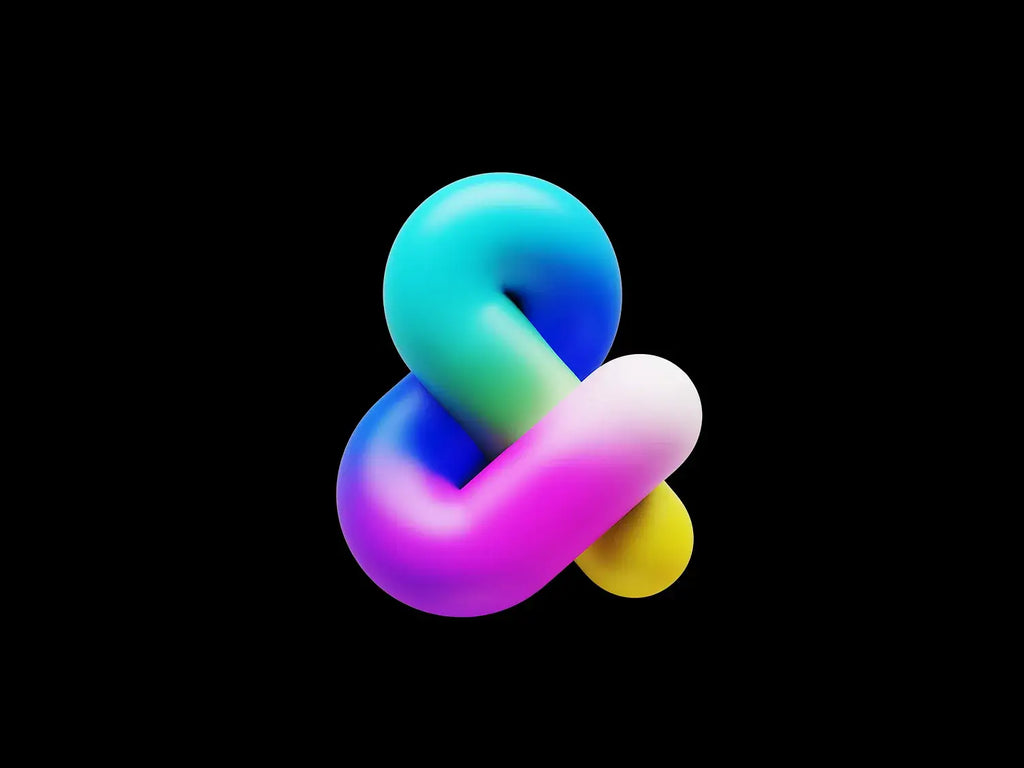
Source: Mihai Dolganiuc, Ampersand 3D Logo, Dribbble, https://dribbble.com/shots/24869500-Ampersand-3D-Logo
Eco-Friendly and Sustainable Design
Eco-friendly and sustainable design is becoming a major focus in modern branding, influencing how companies visually communicate their environmental responsibility. This trend emphasizes nature-inspired elements, organic shapes, and earthy color palettes to reflect a brand’s commitment to sustainability.
Many businesses are opting for green-inspired logos that incorporate natural symbols such as leaves, trees, and water. These elements help convey messages of environmental consciousness while maintaining a visually appealing and recognizable identity. Brands in industries like organic food, renewable energy, and sustainable fashion particularly embrace this approach.
Simplicity plays a crucial role in eco-friendly logo design. Clean, minimalistic lines and balanced compositions ensure clarity while reducing visual clutter. Logos in this category often use soft curves and hand-drawn illustrations to create a warm and approachable aesthetic.
Color selection is equally important in sustainable branding. Earthy tones such as deep greens, warm browns, and soft blues dominate, reinforcing the natural connection. Some brands incorporate textured elements that mimic recycled materials or hand-crafted artwork to further enhance authenticity.
Another emerging trend is adaptable logo systems that reduce the need for excessive rebranding. By designing timeless and scalable logos, companies minimize environmental impact by reducing waste in packaging and printing.
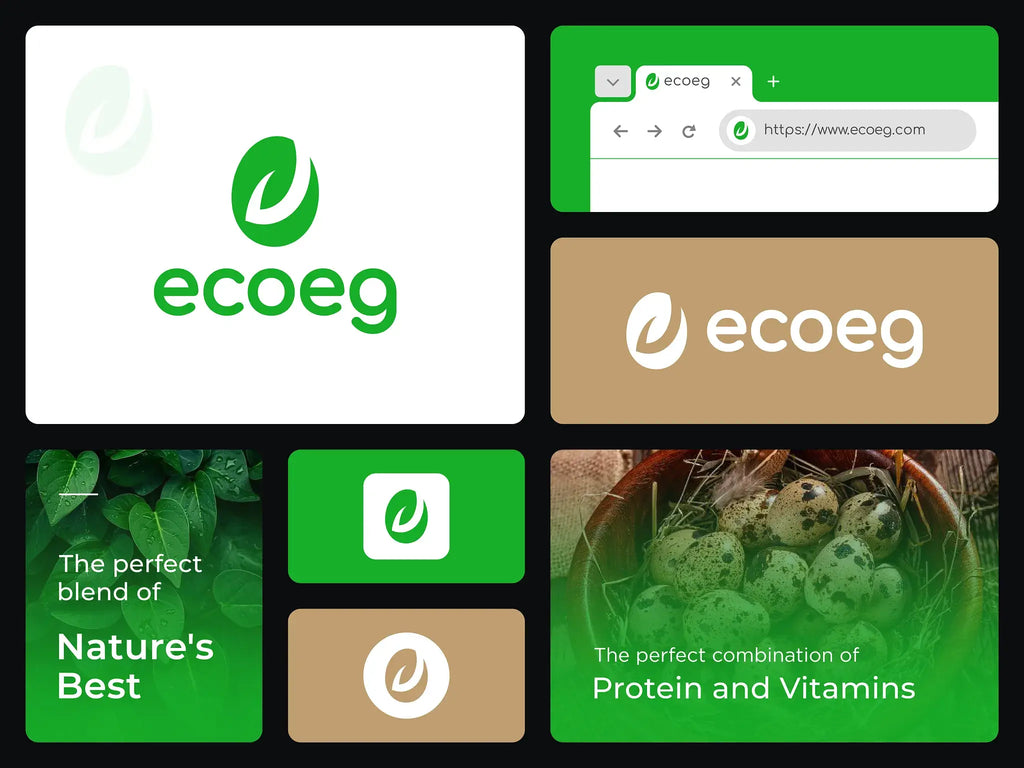
Source: Soaib, Eco Logo, Dribbble, https://dribbble.com/shots/25744903-eco-logo
Negative Space Creativity
Negative space creativity is one of the most sophisticated logo design trends, allowing brands to communicate hidden meanings through clever visual storytelling. This approach utilizes the empty spaces within or around a logo’s main elements to form secondary images or symbols.
One of the biggest advantages of negative space design is its ability to create a memorable and engaging brand identity. By integrating subtle shapes within a logo, designers add layers of meaning that encourage audiences to take a closer look. This hidden-message technique enhances brand recognition and creates a sense of discovery.
Many well-known brands have successfully leveraged negative space to create iconic designs. A common approach is embedding an image within the letterforms or combining two distinct elements into one seamless composition. The key to mastering this technique is ensuring that both the primary and secondary visuals remain clear and balanced.
This design trend also supports minimalism, as negative space eliminates unnecessary elements while maintaining a strong visual impact. By keeping designs uncluttered, logos achieve greater versatility across different applications, from digital screens to print materials.
Typography-based negative space logos are also gaining popularity. Creative adjustments to letterforms can reveal hidden images or messages without sacrificing readability. This technique allows for unique, customized branding while keeping the design elegant and modern.
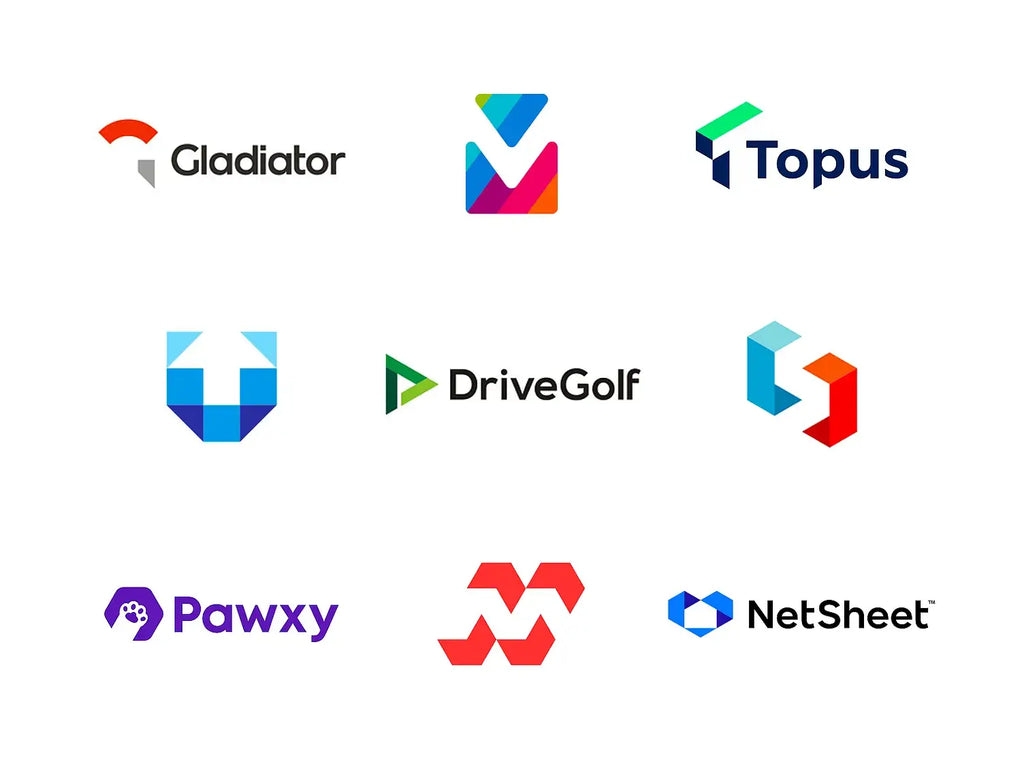
Source: Alex Tass, Negative Space Logos Collection, Dribbble, https://dribbble.com/shots/23907244-Negative-space-logos-collection
Nostalgic Retro Logos
Nostalgic retro logos are making a strong comeback, blending classic design elements with modern aesthetics. This trend draws inspiration from vintage branding, incorporating typography, color palettes, and textures reminiscent of past eras. Brands use retro design to evoke familiarity, authenticity, and a sense of timelessness.
One of the most recognizable features of this trend is vintage typography. Serif fonts, script lettering, and bold block letters contribute to the nostalgic feel, often reflecting styles from the 1970s, 80s, and 90s. Many brands customize these fonts with rough textures or hand-drawn elements to enhance the aged look.
Muted and earthy color palettes also define nostalgic logos. Shades of mustard yellow, burnt orange, forest green, and deep burgundy bring warmth and character. Some designs incorporate faded or grainy effects to mimic old-school print techniques like letterpress and screen printing.
Icons and illustrations in retro logos often showcase simple, hand-drawn styles. Circular badge-style logos and minimalist illustrations are common, adding a handcrafted and artisanal feel. Many brands in the food, beverage, and apparel industries embrace this trend to create an emotional connection with consumers.
Despite their vintage influences, nostalgic retro logos are carefully modernized for versatility. They remain effective in digital formats while preserving their old-school charm. As brands look to blend heritage with contemporary appeal, this trend continues to thrive, proving that classic design never goes out of style.
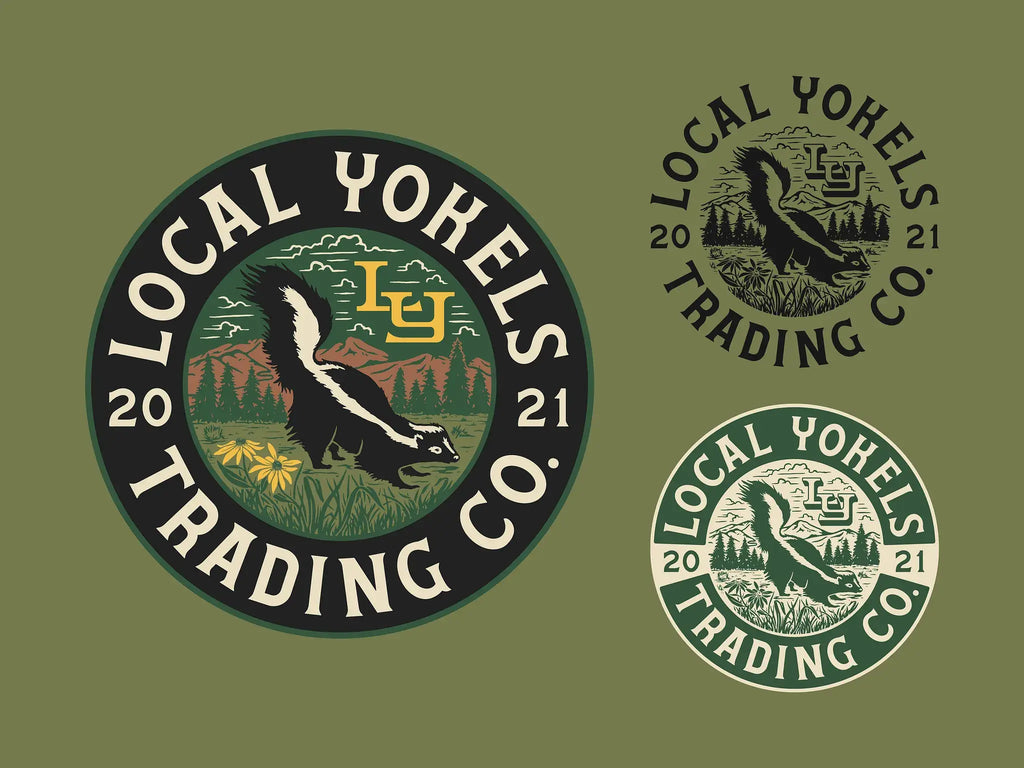
Source: Chelsea Bunn, Local Yokels Emblem, Dribbble, https://dribbble.com/shots/19480740-Local-Yokels-Emblem
AI-Generated and Futuristic Logos
AI-generated and futuristic logos are redefining the creative landscape, merging technology with innovative design principles. Artificial intelligence is transforming how logos are conceptualized, offering hyper-personalized, algorithm-driven solutions that push the boundaries of traditional branding.
AI-assisted design tools analyze brand attributes and industry trends to generate unique logo concepts. These tools allow for rapid prototyping, creating a variety of options in seconds. The result is highly optimized designs that align with a brand’s personality while maintaining a sleek and modern aesthetic.
Futuristic logos often feature abstract geometric shapes, dynamic gradients, and high-tech visual effects. Motion and interactive elements play a key role, making logos adaptable for digital-first experiences. Brands in technology, gaming, and finance are leading this trend, using advanced design techniques to showcase innovation.
Holographic and neon-inspired color schemes are also prevalent in futuristic logos. These palettes incorporate electric blues, purples, and metallic finishes, creating a high-energy, sci-fi-inspired look. Some designs experiment with transparency and layering effects to add depth and complexity.
Another emerging style is adaptive logos—intelligent designs that change based on user interaction or environmental factors. These responsive logos enhance brand engagement, offering a next-level digital experience.
As artificial intelligence continues to evolve, AI-generated and futuristic logos will become more refined, pushing the creative limits of branding. This trend represents the intersection of art and technology, ensuring that logos remain innovative and visually captivating in the modern era.
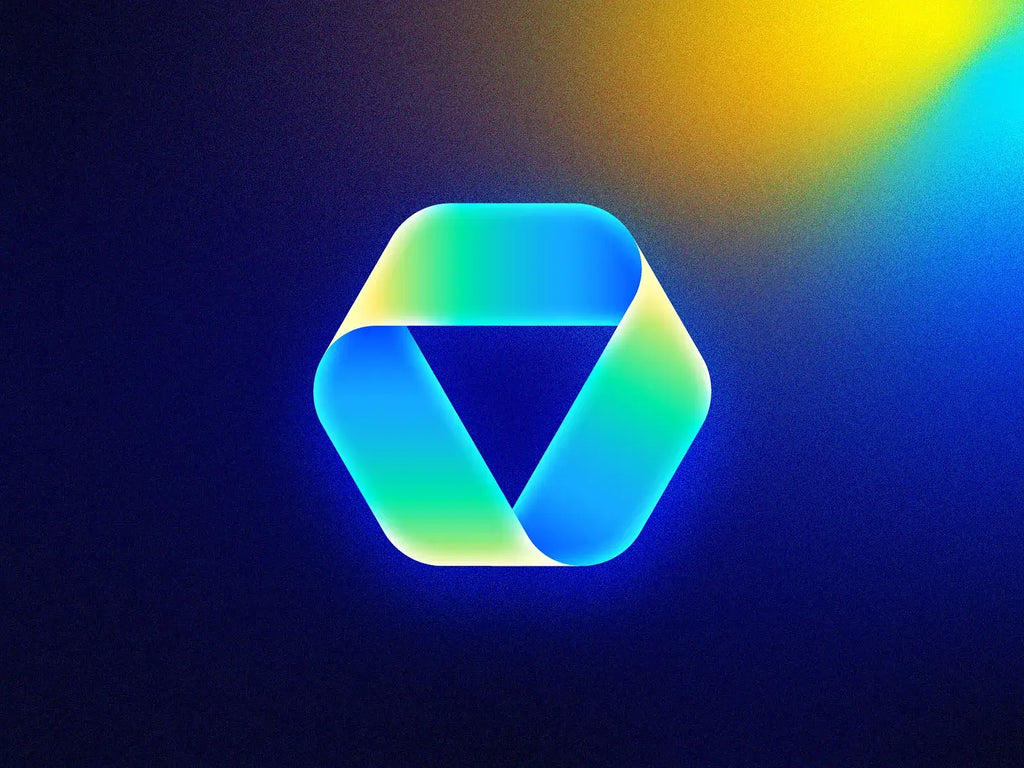
Source: Mihai Dolganiuc, Futuristic Logos #13 - Google Drive, Dribbble, https://dribbble.com/shots/18021082-Futuristic-Logos-13-Google-Drive
Conclusion
As branding continues to evolve, logo design trends in 2025 reflect a balance between modern innovation and timeless aesthetics. From minimalist line art to bold typography and AI-generated visuals, logos are becoming more adaptable, engaging, and meaningful. Businesses are embracing motion, depth, and sustainability to enhance brand identity across digital and physical spaces. Whether through nostalgic retro styles or futuristic designs, brands are redefining how they communicate visually. As consumer expectations shift, staying ahead of these trends ensures a strong and lasting brand presence. The future of logo design is dynamic, creative, and driven by purpose.
Understanding these logo design trends is crucial for anyone looking to carve out a space in the future-forward world of branding. Whether you are refreshing an existing logo or creating a new one, aligning with these trends can make your brand speak the language of the times. Let's explore the most compelling logo design trends of 2024 and understand how they can elevate your brand identity to the next level.
Let Us Know What You Think!
Every information you read here are written and curated by Kreafolk's team, carefully pieced together with our creative community in mind. Did you enjoy our contents? Leave a comment below and share your thoughts. Cheers to more creative articles and inspirations!
























Leave a Comment